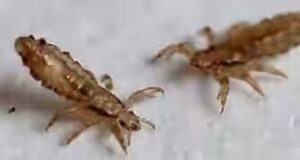Pediculosis (Pubic Lice Infection); A Common STD, Is pubic lice an Std or STI?
Is pubic lice an STD? Pediculosis pubis is a sexually transmitted infection, caused by ectoparasites called crabs (pubic lice). Constant itching that exacerbates at night is one of the reported pediculosis pubis symptoms. This ectoparasitic infection is treated by using medicated shampoos and creams which are usually recommended by physicians.

Pediculosis is the medical term for lice infestation, which may occur in different parts of the body. Lice are a group of wingless, obligate ectoparasites, classified under the taxonomic order Phthiraptera. While head is the most common site of lice attack, specific types of lice called crabs (pubic lice) infest the pubic region.
This condition is called pediculosis pubis or phthiriasis pubis. The crabs are classified as insects that feed exclusively on blood and complete their life cycle in human hair. In addition to the head and pubic lice, body louse that attack several parts of the body is also identified.
How to Identify Pediculosis Pubis?
Pediculsis can affect all sexually active people, the rate of occurrence is highest amongst teenagers. Both males and females are equally susceptible to infection by these skin parasites.
The worst part with pediculosis pubis is, crabs are transmittable from an infected person to another during sexual activity and via direct skin-to-skin contact. Sharing of towels, clothes, bedding, and other personal items with an infected person is a common mode of spreading crabs.
Based on the cause of the disease, crabs infection or pediculosis pubis is classified as a sexually transmitted disease (STD). After infection, symptoms of pediculosis pubis may right away or some people have symptoms several days (up to 4 weeks) after infection takes place. Regarding identification of pediculosis pubis signs and symptoms, an individual infected with pubic lice may experience the following.
Intense itching or pruritus in the genital and perianal areas is a typical sign of crabs infection. It usually aggravates during sleep and irritation is more in regions where pubic hair are present.
As with other ectoparasites, they injects saliva while biting and feeding on blood. Thus, itchiness and burning sensation in the pubic-hair region is felt due to the body’s reactions to crab saliva.
Noticeable wheals, excoriation, and papules are present on the bite sites. Also, the infected areas usually have open sores. Continuous scratching of the bite sites often lead to development of other infections.
A symptom typical of pubic lice bite is the presence of discolored sores (maculae ceruleae), which are bluish-gray or blue in color. In severe cases, crab infestation gives off a foul smell in the specific area.
In order to confirm pediculosis pubis, look for presence of flat, light-brown adult lice and eggs at the roots of pubic hair. Both adults and eggs (nits) are visible to naked eyes. Nits laid by the female pubic louse hatch within 6 – 8 days. Those who have multiple sexual partners are more prone to this parasitic infection than others.
So, are there any pediculosis pubis complications?
With crabs infection, there is no severe medical complication as such. The only concern is, constant scratching over the infected areas, leaving open skin sores and increasing risks for secondary infections. This can be minimized by early detection, treating lice infections in the early stages. On the better side, STD crabs infection responds well to treatment and personal care.
How to Treat Pediculosis Pubis? How to get rid of crabs STD
People having symptoms of crabs infection should avoid close contact with others
(especially sexual partners) until the condition is diagnosed and treated promptly.
For diagnosis, suspected pediculosis pubis symptoms are examined carefully.
Once confirmed, the doctor may recommend topical formulations containing permethrin for both the partners. This topical cream should be applied at night and rinsed the next morning. In addition, shampoos are available with the same chemical ingredients. To fetch prompt results, always keep the genital area clean, and follow the instructions for using creams and shampoos religiously.
For pubic lice treatment, use of medicated creams or shampoos should be continued for 7 – 14 days. This is to make sure that the recently hatched lice are exterminated too. Besides this, adopting good personal hygiene tips is necessary to address this parasitic infection. Bedding, linens, and undergarments should be washed with hot water.
If possible, dry them properly in the sun to kill lice. And for preventing pediculosis pubis, avoid sharing clothing with an infected person and also, don’t try on swimsuits of others. Simple tips like these will surely help in preventing the transmission of pubic lice.
Stay lice free!
Culled from ~Adeleke Olusegun Olaoluwa





















